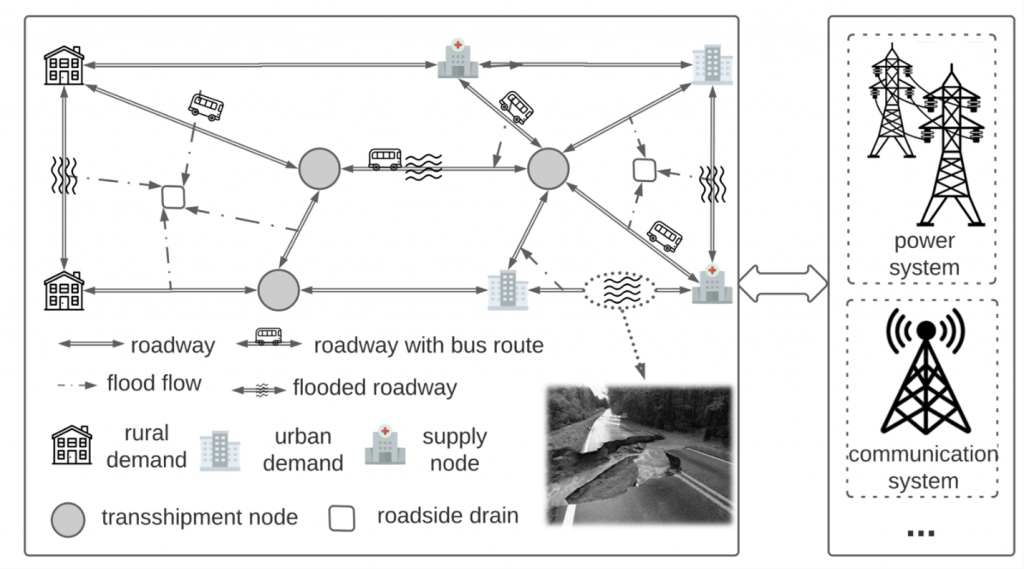Resilient Civil Infrastructure and Equitable Community Mobility
As a critical lifeline infrastructure, the transportation system plays a pivotal role in urban communities’ economic, social, and public health fabric. The escalating frequency of extreme weather events, driven by climate change, poses a growing threat to this indispensable network, jeopardizing economic growth, population well-being, and overall societal prosperity. Consequently, it is imperative to strategically empower the transportation system to efficiently and safely sustain and reinstate equitable mobility services before and after hazardous events. My studies focused on the following critical aspects, seeking to establish an interdisciplinary theory and methodology foundation for establishing resilient civil infrastructure systems and promoting equitable community mobility.
1. Strategic and robust pre-disaster planning to withstand extreme events characterized by high uncertainty via integrating operations research, transportation network modeling, AI/ML, urban planning, and other methods. I exemplify this approach with three notable studies
- My prior research developed a vulnerability index of roadways, with a particular emphasis on traffic flow capacity survivability. Building upon this, we created a bi-level optimization model to formulate a rapid and adaptive road reinforcement plan, enabling swift emergency response to disasters of varying severity and uncertainties.
- My recent study crafted robust optimal plans for electric vehicle (EV) charging stations, accounted for demand surges during extreme events, and accommodated the steady increase aligning with the evolution of the EV market.
- A current study delved into AI-employed traffic planning models to validate the efficacy of urban planning instruments in bolstering the resilience of community-based small businesses to environmental shocks arising from disasters. A Generative Adversarial Network is adopted to capture travel costs for our planning models.

2. Efficient and equitable post-disaster restoration from a single or compound hazard, considering sophisticated functional interdependence among different civil lifeline infrastructure systems, inherently intricate physical (e.g., bridge, pavement, foundation) and flow (e.g., water/traffic) dynamics as well as human mobility patterns orientated from various socioeconomic activities in a multimodal transportation system. Two noteworthy examples include:
- A previous study focused on co-optimization approaches to efficiently restore the power grid and transportation system, considering interactive constraints between these lifeline infrastructures.
- Recent studies investigated dynamic post-flooding roadway restoration plans, addressing the intricate interaction between floodwater hydrodynamics and traffic flow dynamics. We provided interdisciplinary solutions by integrating traffic equilibrium and hydrodynamics into a Markov Decision Process and solving it by Actor-Critical Deep Reinforcement Learning.
Funding source: Stride B6 Project; NSF Award CMMI 2316450;